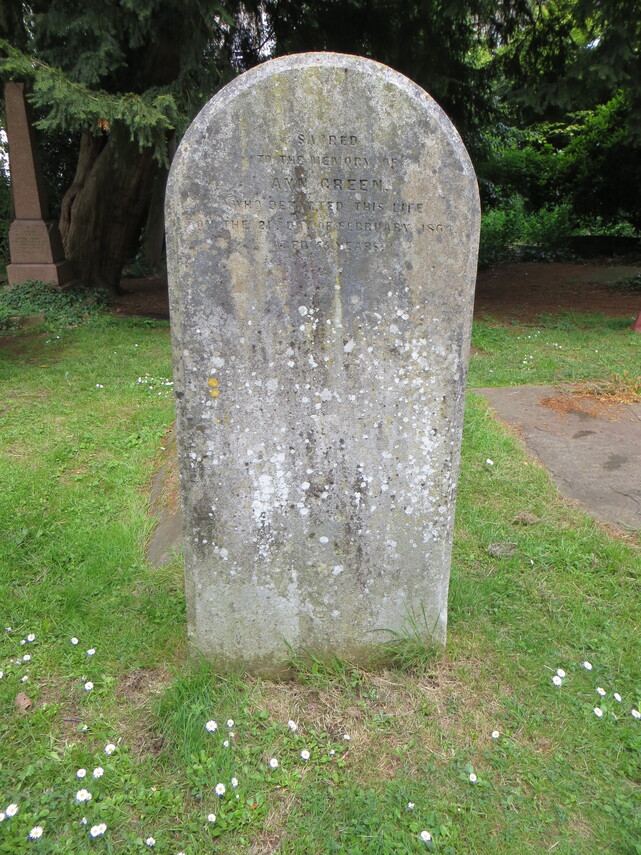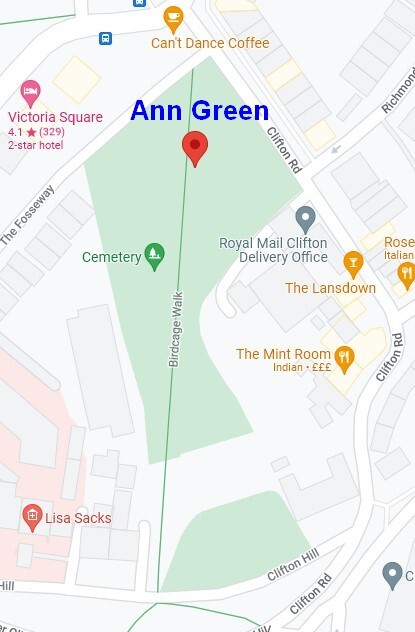Walking down Birdcage Walk, the passer-by will notice a lonely headstone in the north-east of the churchyard dedicated to the memory of Ann Green. Among the hundreds of memorials across St Andrew’s churchyard, Ann Green’s grave is unusual in its simplicity. She is neither remembered as part of a family nor, like other women who were buried alone, defined by her nearest male relative, ‘wife of….’ or ‘daughter of…’ So, who was Ann Green and what was her story?
Ethel Baker, who as a girl would have passed the grave walking to and from Clifton High School, was so intrigued by Ann that she invented a complete backstory for her, published as Miss Ann Green of Clifton (1936). The fictional Ann was the daughter of a wealthy merchant whose fiancé died heroically in the 1831 Bristol Riots and who subsequently dedicated her life to good works. Ann was buried in this rather forlorn spot, “for there, many years ago, her lover plighted his troth to her.”
In reality, Ann Green’s story is more prosaic, but no less interesting. Born in Ledbury, Herefordshire in 1811, she appears to have been widowed during the 1850s. At a time when middle class incomes were modest and life insurance unaffordable, many widows were left with little, if any, financial support. To survive, they were often forced to seek paid employment, but in a society that insisted a woman’s place was in the home, opportunities were limited. Taking in lodgers was a pragmatic solution and by the mid-nineteenth century, the practice was so widespread that the status of landlady had become respectable.
As the Bristol Post Office Directory & Gazetteer (1859) shows, Clifton was well supplied with lodging houses for the, “continual influx of affluent visitors”. The directory lists four lodging house keepers in Buckingham Place, including Mrs Ann Green at number 13. Among Ann’s lodgers during the summer of 1861 were George Thompson, a wealthy shipowner and his wife Isabella, visiting from the north east of England, together with Elizabeth Straghan, a Clifton resident of independent means. By 1863, Ann was running a new lodging house at Walton Lodge, Lower Harley Place and it was here in 1864 that she died.
The story, however, does not end in 1864 with Ann’s death, but in 1941 with the death of Ethel Baker, whose ashes were interred beneath a bird-bath memorial close to Ann Green’s grave.
Ann Green's simple headstone
Ethel Baker's birdbath memorial, Ann Green headstone behind
Location of the grave - next to Birdcage Walk


